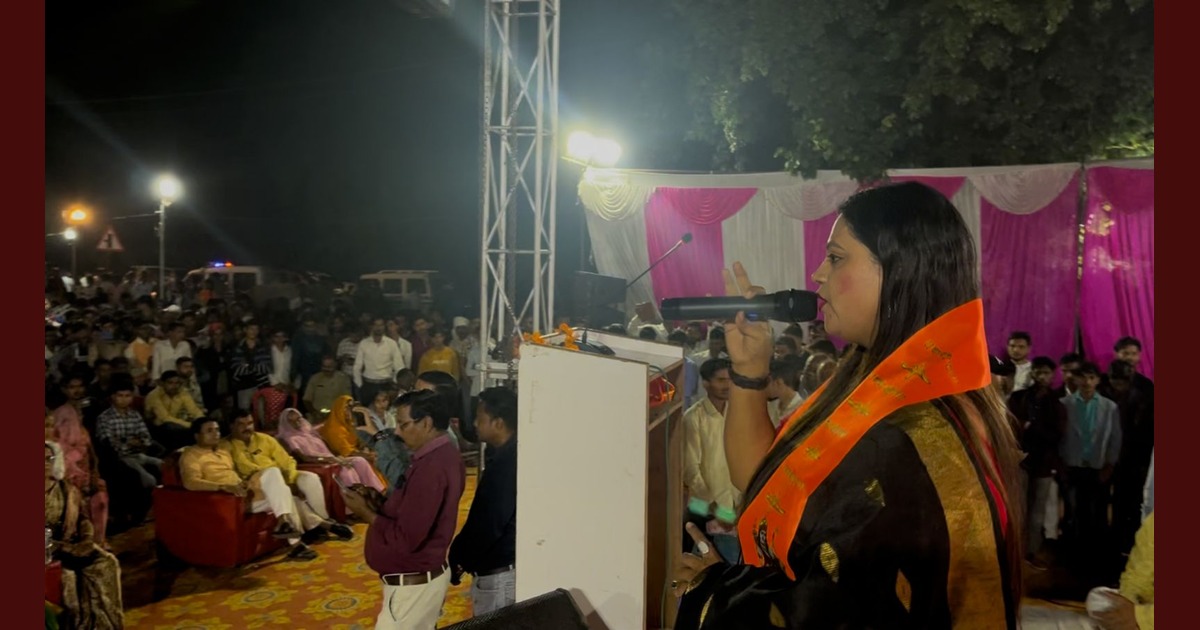
Astronauts Sunita Williams and Butch Wilmore Return to Earth After Unexpected Nine-Month Stay in Space
Lucknow: After an extended and unexpected nine-month mission aboard the International Space Station (ISS), NASA astronauts Sunita Williams and Butch Wilmore have finally returned to Earth. The two veteran astronauts, who originally flew to space aboard Boeing’s Starliner in June last year for what was supposed to be a brief test mission, splashed down safely off the coast of Florida on Wednesday at 3:27 am IST.
Their return, facilitated by SpaceX’s Crew Dragon, marks the end of a prolonged and challenging mission that tested the resilience of both the astronauts and the NASA engineers working tirelessly to bring them back home. The mission was initially meant to last just a few days, but propulsion failures in the Starliner spacecraft forced a change of plans, leading to an extended stay on the ISS.
Alongside Williams and Wilmore, NASA astronaut Nick Hague and Russian cosmonaut Aleksandr Gorbunov also returned aboard the Crew Dragon, which successfully undocked from the ISS on Tuesday at 10:35 am IST before making its way back to Earth.
Their journey home was not without excitement. As the spacecraft re-entered Earth’s atmosphere, it was subjected to immense heat and pressure, with the crew experiencing up to four times Earth’s gravity before parachutes deployed, ensuring a safe splashdown.
Now, as they begin their recovery process, their experience will play a crucial role in shaping the future of human spaceflight, particularly in NASA’s long-term ambitions for deep space exploration and Mars missions.
⸻
A Mission That Wasn’t Supposed to Last This Long
Williams and Wilmore launched aboard Boeing’s Starliner on what was supposed to be a simple test flight—a short round trip to the ISS to validate the spacecraft’s capabilities before it could be fully certified for regular astronaut transport. However, serious propulsion system failures quickly derailed those plans.
The Starliner’s Troubles
Boeing’s Starliner spacecraft, one of NASA’s two commercial crew transport vehicles (alongside SpaceX’s Crew Dragon), encountered technical problems shortly after docking with the ISS. The primary issue stemmed from its propulsion system, which was deemed unfit for a return trip. This forced NASA and Boeing engineers to make a difficult decision:
• Instead of risking a potentially dangerous flight home, they opted to leave the spacecraft in space and later send it back uncrewed for further analysis.
• This left Williams and Wilmore stranded aboard the ISS, extending their stay from just a few days to an unprecedented nine months.
While Boeing and NASA worked tirelessly to diagnose and resolve the spacecraft’s issues, the two astronauts had to adapt to a much longer-than-expected mission.
Contributions to Space Research During the Extended Stay
Despite the challenges, the unexpected mission extension provided an invaluable opportunity for scientific research. Williams and Wilmore played an essential role in supporting ISS operations, conducting experiments, and assisting their fellow astronauts.
Key Research Conducted During Their Mission:
1. Plant Water Management and Vegetable Production Systems
• The astronauts worked on advanced plant-growing experiments aimed at improving food production in space.
• These studies are critical for long-duration space travel, including missions to Mars, where astronauts will need to grow their own food.
2. Space Medicine and Human Health Studies
• Long-term exposure to microgravity affects human physiology, leading to muscle atrophy, bone density loss, and immune system changes.
• The astronauts participated in various medical experiments to better understand these effects, providing vital data for future deep-space missions.
3. Robotics and Life-Support System Enhancements
• They helped test and refine robotic systems designed to assist astronauts in future space missions.
• They also worked on improving life-support systems that will be used for prolonged human habitation in space.
4. Troubleshooting ISS Technical Issues
• The astronauts played a critical role in maintaining the space station, assisting with repairs and troubleshooting various technical malfunctions.
Through their work, Williams and Wilmore made significant contributions to space science, proving that astronauts can remain in space for extended periods while continuing valuable research.
⸻
The Long-Awaited Return Journey
After months of careful planning and technical evaluations, NASA and SpaceX finally determined that the safest way to bring Williams and Wilmore home was via SpaceX’s Crew Dragon spacecraft.
On March 18, 2025, at 10:35 am IST, the Crew Dragon undocked from the ISS, carrying Williams, Wilmore, Nick Hague, and Aleksandr Gorbunov. The 17-hour journey back to Earth was a high-intensity experience, with astronauts subjected to the extreme forces of re-entry.
What Happens During Re-Entry?
• As the capsule re-enters Earth’s atmosphere, friction causes it to heat up to thousands of degrees Fahrenheit, making it glow like a fireball.
• The spacecraft then rapidly slows down, subjecting the astronauts to forces of about four times Earth’s gravity (4G).
• Four large parachutes deploy, slowing the capsule down further for a gentle splashdown in the ocean.
Splashdown and Recovery
At 3:27 am IST, the Crew Dragon capsule splashed down off the coast of Florida, where recovery teams were waiting.
• NASA and SpaceX personnel quickly retrieved the astronauts and conducted initial medical checks.
• The astronauts were then transported to a recovery facility, where they would undergo more comprehensive health assessments before reuniting with their families.
⸻
What’s Next for Williams, Wilmore, and NASA?
After spending nine months in space, Sunita Williams and Butch Wilmore will now focus on recovery. Returning to Earth after an extended stay in microgravity presents unique physical challenges, including:
• Muscle weakness and loss of coordination
• Bone density reduction
• Readjustment to Earth’s gravity
Medical Observation and Rehabilitation
NASA doctors will closely monitor the astronauts’ health in the coming weeks, helping them regain strength through physical therapy and rehabilitation exercises. The process will take time, but both astronauts are expected to make a full recovery.
Reuniting with Family
After months away, one of the first things the astronauts will do is spend time with their loved ones. As Helen Sharman, Britain’s first astronaut, put it:
“They will feel fantastic to be back on Earth. The fresh air is the first thing that gets you.”
For Sunita Williams and Butch Wilmore, the smell of Earth, the taste of fresh food, and the simple pleasure of walking without floating will be deeply appreciated.
Lessons Learned for Future Space Missions
While the mission did not go as planned, it has provided critical lessons for NASA, Boeing, and the future of human spaceflight.
1. Improving the Reliability of Starliner
• NASA and Boeing will conduct a thorough investigation to determine what went wrong with Starliner’s propulsion system.
• Future flights will likely include enhanced safety measures to prevent similar issues.
2. Understanding the Effects of Long-Term Space Travel
• The extended mission offered valuable insights into how astronauts adapt to unexpected changes in mission duration.
• This knowledge will be crucial for NASA’s Artemis program and future Mars missions.
3. Enhancing Contingency Planning for Space Missions
• The situation reinforced the importance of having multiple spacecraft options for astronaut transport.
• NASA will continue refining its backup strategies to ensure astronauts always have a safe way home.
Awadh360 plus
Conclusion
Sunita Williams and Butch Wilmore’s return to Earth marks the end of an extraordinary mission—one that tested their endurance, skills, and patience. Despite the unexpected challenges, their contributions to space research and station operations have furthered our understanding of long-term space habitation.
As they recover and share their experiences, their journey will serve as an important milestone in the quest for deeper space exploration. Whether it’s the Moon, Mars, or beyond, the lessons learned from their mission will help shape the future of human spaceflight.
Popular Categories
Read More Articles
Travel and Tourism
Meerut’s vanishing heritage: Why its mughal treasures are crumbling away by Mohammed M. Raza November 19, 2025Business
Hafele Valeriya Dishwasher: The New Standard in Kitchen Hygiene by Awadh 360° Desk November 14, 2025Entertainment
Banaras gave me the notes, Bhatkhande polished them: Bhojpuri singer Sarita Tiwari by Awadh 360° Desk November 10, 2025Travel and Tourism
Statue of Unity Sets New Tourist Footfall Record as PM Modi Hails Vallabhbhai Patel's Legacy by Awadh 360° Desk October 31, 2025



